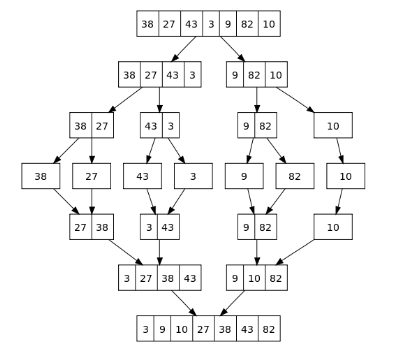O(n), O(n log n), O(1), O(n^2), O(2^n)
What is the time complexity, expressed in big O notation, of the below function? This function, scrambleString, accepts a string as an argument and returns that a string with the letters randomly rearranged.
function scrambleString(str) {
let split = str.split("");
split.forEach((char, idx) => {
let randInd = Math.floor(Math.random() * split.length);
split[idx] = split[randInd];
split[randInd] = char;
});
return split.join("");
}What is the time complexity, expressed in big O notation, of the below function? This function, infiltrate, accepts an array as an argument. It creates an object called secretAgent and replaces a random index of an array with that object. It then returns the array.
const infiltrate = (arr) => {
const secretCode = Math.floor(Math.random() * Math.random() * 1000);
const secretAgent = {
codename: "Duchess",
secret: secretCode
};
const randomInd = Math.floor(Math.random() * arr.length);
arr[randomInd] = secretAgent;
return arr;
}You are building a phonebook online. You want users to search for a user and find their associated phone number. What data structure what be best to model your data and why?
Code:
class Node {
constructor(value) {
this.value = value;
this.next = null;
}
}
class LinkedList {
constructor() {
this.head = null;
this.length = 0;
}
}Pretty Print Output:
Console Log:
-> 1 -> 2 -> 3 -> null
- enqueue(value) : Add new element to the end of the queue.
- dequeue() : Removes element from beginning of the queue and returns it.
- peek() : Returns the element from beginning of the queue without removing it.
- isEmpty() : Returns a boolean indicating if the queue is empty or not.
Code:
class Queue {
constructor() {
this.arr = [];
}
}- What is a Hash Function is?
- What is a flaw with the Hashing function below:
function hash(key) {
let sum = 0;
for (let i = 0; i < key.length; i++) {
sum += key.charCodeAt(i);
}
return sum;
}
hash("Sally"); // 517
hash("Dean"); // 376
hash("Dane"); // 376What kind of data structure would perfectly organize the following data? Also explain why this kind of data structure would be useful.
The fibonnaci sequence works like the following:
- Fibonacci sequence: [0, 1, 1, 2, 3, 5, 8, 13, 21] and fib(4), the result would be equal to 3
Example:
console.log(fib(1)) // 1
console.log(fib(2)) // 1
console.log(fib(3)) // 2
console.log(fib(4)) // 3If your number is 5, you would have:
5! = 5 * 4 * 3 * 2 * 1
The pattern:
0! = 1
1! = 1
2! = 2 * 1
3! = 3 * 2 * 1
4! = 4 * 3 * 2 * 1
5! = 5 * 4 * 3 * 2 * 1

